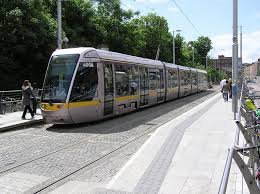The publication of the Greater Dublin Transport Strategy 2022-2042 in draft form for public consultation is, I am afraid, a sick joke on the people of the greater Dublin metropolitan area.
It consists of 160 pages of waffle, aspiration, euphemisms, evasions, bullet-point wish-lists, and vague blather about urban planning, transport values and all sorts of conditionality. It could have been set out in 30 pages. When you wade through the 160 pages of padded-out text, you find at page 157 two pages titled “Phasing”. There one finds a hint of the reality of this strategy.
Between now and the end of this decade in 2030, it is proposed to implement the Dublin Area BusConnects Network with core corridors. It is also proposed to introduce “next generation ticketing”. DART+ is to be implemented in part. A cycle network for the Greater Dublin area is promised in part. There will be “city centre management measures” and “climate action management measures”.
Between 2031 and 2042, the back-loaded period of the strategy, (two to five government terms from now) the strategy envisages the construction of Metrolink from Swords to Charlemont (where a space for an underground terminus is being developed already) and there is mention of possible Luas lines to Lucan (promised 10 years ago, to Finglas, to Bray and to Poolbeg. But each of these Luas projects, with the exception of Finglas, is quite tentative.
Take the Poolbeg Luas proposal; this line is left in doubt and needs to be re-assessed perhaps for delivery in the latter stages of the strategy (i.e. in twenty years). But it is comforting to note that, in the planning assessment, “work undertaken to date in the regard (sic) will form a key input into this assessment”. Luas to Lucan “will be subject to further assessment and analyses” and the NTA is satisfied that the project “be pursued”. In the case of Finglas, we are told that “it is the intention to complete detailed design and planning over the coming years and to progress the project to construction.” Luas to Bray is also subject to “detailed design and planning work” and no decision has yet been made on “the alignment and locations to be served” between Bride’s Glen and Bray. There is mention of a number of possible post-2042 Luas developments for Balgriffin, Tyrrelstown, Blanchardstown.
Intriguingly, there is also mention of a post 2042 reconfiguration of the Luas Green Line for lines to Bray via UCD Belfield and Sandyford, and a Sandyford to the city centre line. Where does the NTA ambition to extend Metrolink to Sandyford (closing the Green Line for up to two years) fit into this? It has finally been abandoned in favour of more trams on the Green Line. The strategy says, “As such, the upgrading of the Green Line to metro standard is not required as part of this strategy”, Why? Because the “challenges associated with the upgrading of the Green Line to a metro standard have led to an alternative proposal” to create post-2024 a new Luas line along the UCD Belfield line towards Sandyford. That took a long time to sink in.
On Dart, the long-canvassed Underground Dart from Heuston to Connolly is finally buried. Nothing will be done until 2042 but a reservation for such a line will be kept in planning strategies in the meantime. No clear timetable is set for further extending electrified Dart trains to Drogheda, Wicklow, or Kildare. A rail line to Navan is envisaged by 2042. On the Dublin Belfast intercity rail corridor, we are told that the NTA in conjunction with Irish Rail will undertake an assessment of the “need for further infrastructural enhancements” on the Belfast line. That doesn’t sound good for the Green’s proposal for a high speed rail link from Dublin via Belfast and Derry to Donegal.
It seems that the strategy is mainly centred on increasing bus and bicycle usage in Dublin over the next ten years. Private cars are the lowest priority in the new pecking order – even electric cars. In relation to electric cars, little or nothing is said about the problem of on-road charging outside your house. The problem of charging cables on the roadway is acknowledged as a problem for footpath users. Electric scootere are good; electric cars not so good – but better than diesel or petrol. A hint is made that public servants’ free city centre car parking may have seen its day. Where did we hear of that before? When they were threatened with a benefit in kind tax some twenty years ago. It didn’t haapen.
What are we getting for the projected increase in the cost of implementing this wish list from €10 billion to €25 billion?
Reconfigured anti-car traffic-light sequencing? Jams today, jam tomorrow?

